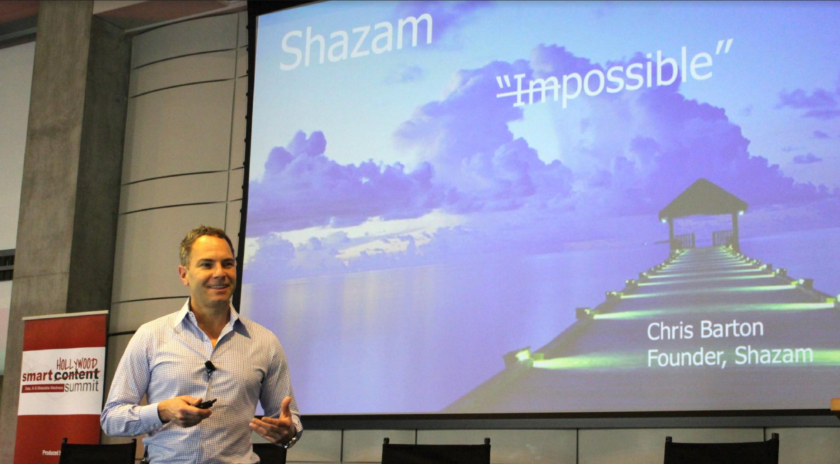Connections

Shazam Founder: Building to Scale Takes Perseverance … and a Bit of Luck
Story Highlights
LOS ANGELES — When Chris Barton and his friends came up with the idea of Shazam in 1999 — to allow for mobile identification of any song, anywhere — it was years before smartphones and mobile apps, the top sound technicians at Stanford and MIT told them it was flatly impossible to pull off, and one of the day’s top venture capitalists openly scoffed at the idea: “I don’t see why anyone would ever use this.”
Today, Shazam has been downloaded more than a billion times, has more than 200 million active monthly users, and can identify more than 40 million songs in a heartbeat. But it was a long slog, getting Shazam from its origins to today, Barton said.
“When you have an idea you’re passionate about, but have so many obstacles, it can be daunting,” Barton said, speaking March 4 during a morning keynote presentation at the Smart Content Summit. “We had all these ideas, but it seemed impossible to make it a reality.”
The vision of Shazam was that it wouldn’t be just a feature, but a product suite, one that connected the song you liked to everything around it: the music video, the artists, the retailers selling it. But the sheer number of songs out there, combined with the ambient noise interference obstacles, made their dream seem impossible to get off the ground initially, Barton said. “For a while, we were wondering if we should just give up,” he said. “The problems just seemed insurmountable.”
But once the Shazam team landed an engineer who came up with a way around the technical issue — by approaching song identification via pure sound recognition, instead of music — there was the song database issue to deal with: they hired teenagers to work around the clock to push CDs through a new software system, tag every song, and get 1.7 million songs together in time for launch.
Next came probably the scariest obstacle: marketing. When Shazam first launched in 2002, a bulky Nokia cell was the leading mobile device, and Shazam was already thinking like an advanced mobile app. To ID a song with the mobile tech available then, you had to dial 2580 while the song was playing, and were sent a text message telling you what song it was. Who was going to use it?
Barton and his team spent millions on marketing, radio, TV, even sending people into bars with cell phones to try the word-of-mouth approach. None of it worked, and the team spent the next six years scraping by, avoiding bankruptcy.
It took the launch of the Apple app store in 2008 — with Shazam as one of the initial offerings — for the concept to finally take off.
“We were able to package it with data, and actually sell it that way,” Barton said. Artists today, plan tours around Shazam data, ads have become a prime source of revenue, and Shazam listens can predict whether or not a song will be a hit.
And shortly after Shazam took off, Barton sat down with that venture capitalist that dismissed his dream. “We laughed about how unpredictable the future is,” he said.
The Smart Hollywood Summit was sponsored by TapeArk and Seagate, Whip Media Group, EIDR, BeBanjo, Cinelytic, Frame.io, Sohonet, Spherex and Sony, and produced by the Media & Entertainment Services Alliance (MESA) and the Smart Content Council.









